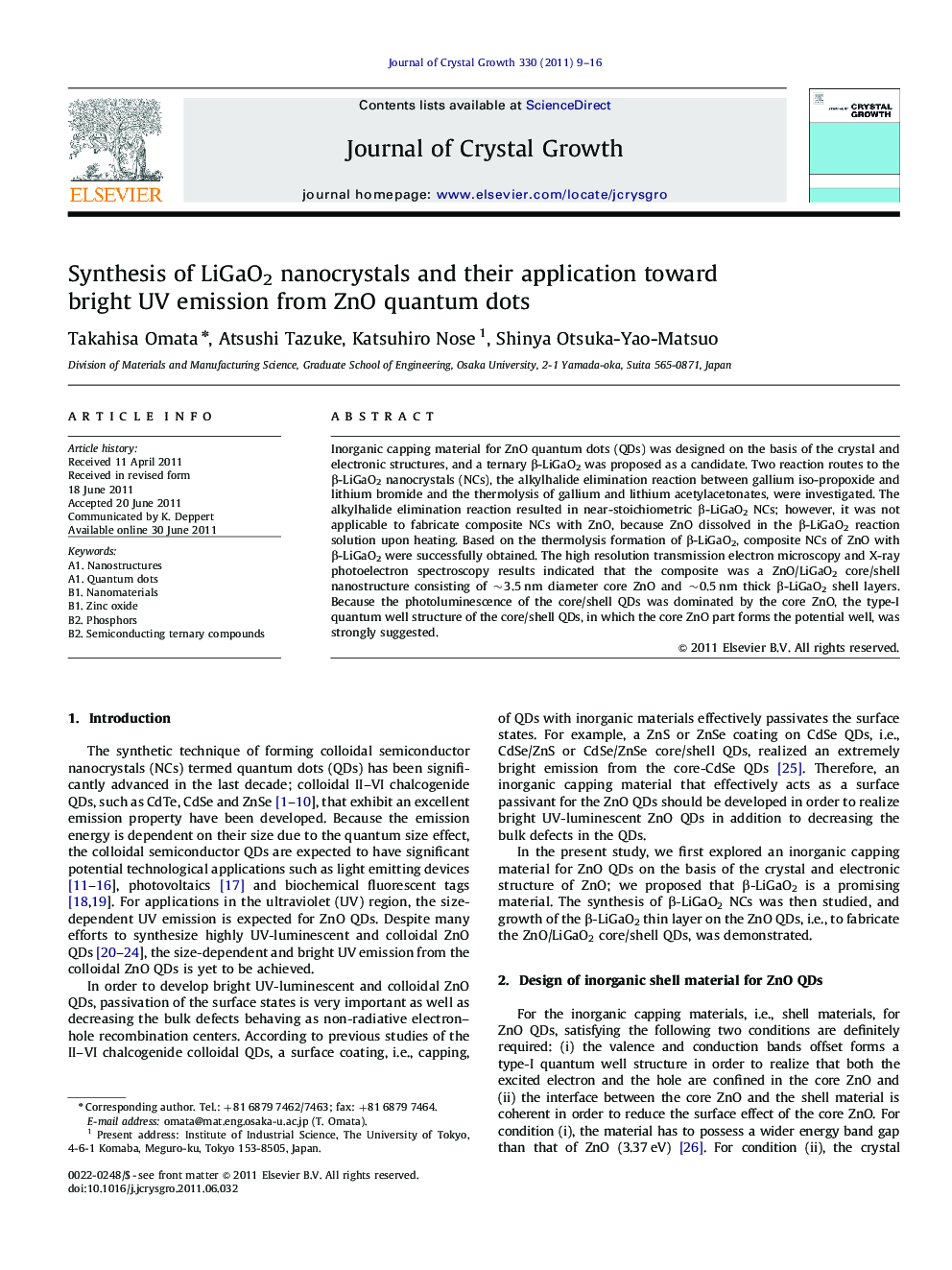| Article ID | Journal | Published Year | Pages | File Type |
|---|---|---|---|---|
| 1792085 | Journal of Crystal Growth | 2011 | 8 Pages |
Inorganic capping material for ZnO quantum dots (QDs) was designed on the basis of the crystal and electronic structures, and a ternary β-LiGaO2 was proposed as a candidate. Two reaction routes to the β-LiGaO2 nanocrystals (NCs), the alkylhalide elimination reaction between gallium iso-propoxide and lithium bromide and the thermolysis of gallium and lithium acetylacetonates, were investigated. The alkylhalide elimination reaction resulted in near-stoichiometric β-LiGaO2 NCs; however, it was not applicable to fabricate composite NCs with ZnO, because ZnO dissolved in the β-LiGaO2 reaction solution upon heating. Based on the thermolysis formation of β-LiGaO2, composite NCs of ZnO with β-LiGaO2 were successfully obtained. The high resolution transmission electron microscopy and X-ray photoelectron spectroscopy results indicated that the composite was a ZnO/LiGaO2 core/shell nanostructure consisting of ∼3.5 nm diameter core ZnO and ∼0.5 nm thick β-LiGaO2 shell layers. Because the photoluminescence of the core/shell QDs was dominated by the core ZnO, the type-I quantum well structure of the core/shell QDs, in which the core ZnO part forms the potential well, was strongly suggested.
► We have proposed β-LiGaO2 as a shell material for the ZnO quantum dots (QDs). ► Fabrication of the ZnO/LiGaO2 core/shell QDs was demonstrated. ► Results indicated that ZnO was capped with ∼0.5 nm thick β-LiGaO2 layer. ► Optical spectra suggested a type-I quantum well structure of the core/shell QDs.
